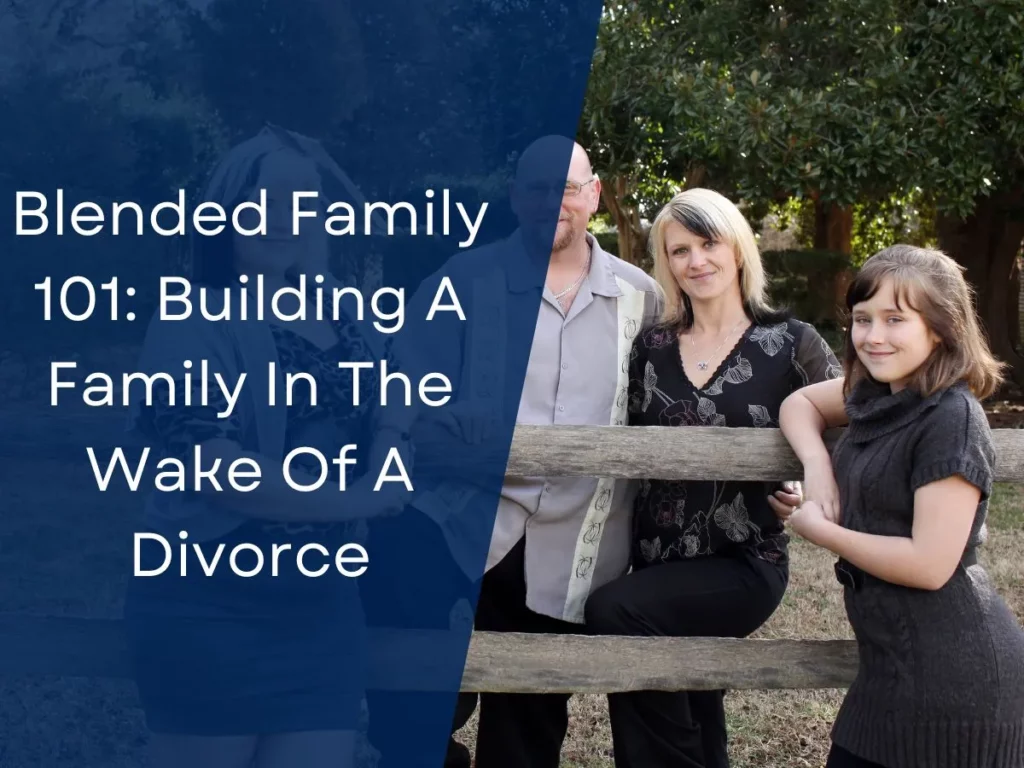A blended family can be a challenge. For many, though, the benefits of creating stability out of the chaos of divorce outweigh the difficulties. As much as divorce signals the final ending of a relationship, it is often a beginning of one as well.
Several of those who experience divorce quickly learn that a terminated marriage does not cut off the need for communication and some sort of relationship with an ex-spouse. In a divorce, a relationship changes rather than ends. This one concept of a family evolution is central to blended family success.
Blended families are increasingly common, too. While divorce has long been prevalent in our society, some of its stigmas have lessened. People often find themselves looking for love and family life after their divorce.
This can complicate life, but can also provide structure and support for a healthy loving family.

What Is a Blended Family?
A blended family is one that features children from parents’ prior relationships. “The Brady Bunch” is a classic example, where a newly-married couple blended their children from previous marriages. Of course, a blended family is much more complicated than a sitcom from 50 years ago.
A blended family is a complexly layered set of relationships. For those who have gone through a divorce, a successful pursuit of post-breakup relationships requires understanding the struggle of these unique family dynamics.
Understanding blended families means appreciating how divorce and loss of a spouse affect all the parties involved. In the case of a divorce, there can be many more parties than just the spouses. When formerly married people seek to build a new family, an exponential amount of family members can enter the fold.
Children gain step-siblings, step-parents, step-grandparents, uncles, and cousins.
A seemingly simple decision to move on to a new relationship can have complex results. This is not to say that pursuing a relationship post-divorce is impossible or even unwise. The struggle can be highly rewarding.
Often, the best relationships grow out of the maturity and self-knowledge that a divorce or loss of a spouse lends.
Building a Blended Family Post-Divorce
Divorce can be ugly. Family law attorneys are known to say that matrimonial law clients are examples of good people at their worst. Emotions run high, and there is a tendency to look to assign blame for a failed relationship.
Understanding and accepting the fact that there will be hurt feelings and resentment is a critical component of healthy family building after a divorce.
Moving On: Building a New Family
Understanding how the termination of a relationship affects the various parties to a marriage, including spouses and children is the first step of rebuilding a new family. A blended family is going to amplify these concerns for several reasons.
First, there may be more children with different expectations and needs. When you add new parties to the family mix, respecting these varied perspectives becomes increasingly difficult.
Steps for Success
Forging a successful blended family starts with self-knowledge then moves through a series of evaluations and choices to move in a positive direction.
Personal Reassessment
Letting go of the old vision of your family
Take responsibility for your part in a past failed relationship
Forgiveness – Remove Pain, Anger, and Resentment
Communication
Healthy communication means no disparagement
Co-parenting Basics
Another crucial component of your blended family is how the individual spouse co-parent with their exes. All of the resentment, jealousy, and blame that destroyed a marriage can poke their heads into your life repeatedly if allowed. This is where a healthy perspective on the future helps illuminate a path.
Without children, ex-spouses can be civil when they run into each other because they likely have no reason to interact. If only this civility were as easy when you have to communicate frequently to coordinate child care, visitation, vacations, school schedules, and financial matters.
It is not easy, but it also is not impossible.
Successful co-parenting requires open communication, consistency, agreement, and positivity. It also requires planning. In many ways, co-parenting is like project management or work collaboration. You, your ex-spouse and the partners in blended families all have one goal: happiness and a positive environment for the children.
Planning and communication mean there are no mistakes or misunderstandings when it comes to schedules.
Lack of communication is the primary cause of strife in co-parenting because it frustrates both parties. Imagine if your coworker kept forgetting key project deadlines and you had to compensate for another’s shortcomings continually.
Clear communication often solves this problem in the workplace and can keep parents on track for success as well.
Further Steps: Finding and Building Joy
It’s easy to see how a blended family is a challenge, but also presents opportunities for happiness and additional outlets for love and affection. Although it may only come after time and patience, stepchildren can love and be loved by their blended family parents and siblings.
While every situation is unique, one reason why a blended family may experience distance is neglecting joyful pursuits. Sometimes too much emphasis is placed on trying to get everyone to act like one big happy family. A less forced approach may be more effective.
Find ways to enjoy life. Let go of the past. Let go of regret and anger and fill your precious moments in life with brightness. Be good to your children, be respectful of your ex-spouse and build a happy new life that is positive and loving, and family strength will follow.
